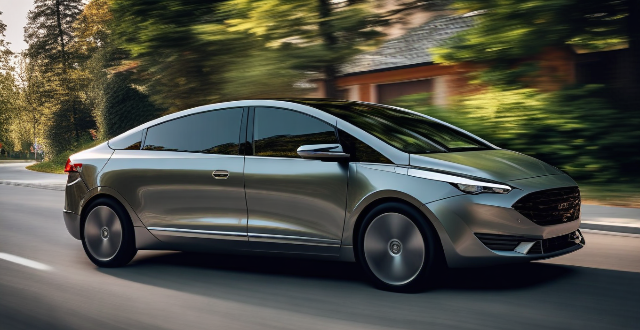A compound hybrid electric vehicle (CHEV) is a type of hybrid vehicle that combines the power of an internal combustion engine (ICE) with two or more electric motors, aiming to improve fuel efficiency, reduce emissions, and increase overall performance. The system intelligently manages multiple power sources to provide an efficient, powerful, and environmentally friendly driving experience.

How does a Compound Hybrid Electric Vehicle work?
A compound hybrid electric vehicle (CHEV) is a type of hybrid vehicle that combines the power of an internal combustion engine (ICE) with two or more electric motors. The primary goal of this configuration is to improve fuel efficiency, reduce emissions, and increase overall performance. Here's a detailed explanation of how a CHEV works:
Power Sources
- Internal Combustion Engine (ICE): This is the conventional gasoline or diesel engine found in most cars. It generates power by burning fuel, which turns the crankshaft and ultimately drives the wheels through the transmission.
- Electric Motors: CHEVs have multiple electric motors that convert electrical energy into mechanical energy. These motors can either assist the ICE or power the vehicle on their own.
Energy Storage
- Battery Pack: A high-voltage battery pack stores electricity generated by regenerative braking and the ICE when it's running efficiently. This stored energy is used to power the electric motors.
Operation Modes
- Pure ICE Mode: In this mode, the ICE runs alone, powering the vehicle without any assistance from the electric motors. This might occur when the battery is depleted or during high-speed driving where the ICE is more efficient.
- Hybrid Mode: In this mode, both the ICE and one or more electric motors work together to propel the vehicle. The electric motors provide additional power when needed, such as during acceleration, or they can take over some of the load to allow the ICE to operate more efficiently.
- Pure Electric Mode: When possible, the vehicle can run solely on electricity, using its electric motors for propulsion. This mode is typically used in low-speed urban driving or when trying to minimize noise and emissions.
- Regenerative Braking: When slowing down or braking, the electric motors act as generators, converting kinetic energy into electrical energy that's then stored in the battery pack. This process helps to recharge the batteries and improve overall efficiency.
Transmission System
- Continuously Variable Transmission (CVT) or Automatic Transmission: Most CHEVs use a CVT or an automatic transmission because they can seamlessly integrate the power from different sources and optimize the output for various driving conditions.
Control Unit
- Hybrid Control Unit (HCU): This is the brain of the CHEV system. It monitors various sensors and inputs to determine the optimal operation mode, managing the power distribution between the ICE and electric motors, and controlling the charging and discharging of the battery pack.
Benefits of CHEVs
- Improved Fuel Economy: By combining the power sources and operating in different modes, CHEVs can achieve better fuel economy than conventional vehicles.
- Reduced Emissions: Electric motors produce zero tailpipe emissions, so when the vehicle operates in pure electric mode, it reduces pollution.
- Increased Performance: The additional torque provided by electric motors can lead to better acceleration and overall responsiveness.
In summary, a compound hybrid electric vehicle is a sophisticated system that intelligently manages multiple power sources to provide an efficient, powerful, and environmentally friendly driving experience.